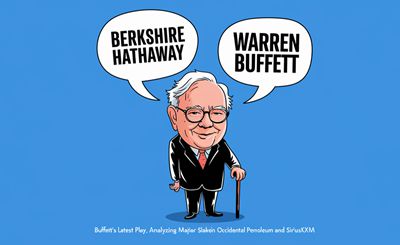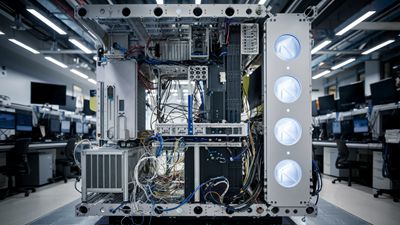Why Is Tesla’s Stock Sinking Today: Robotaxi Event Delay to Blame?
Tesla’s recent announcement to delay its highly anticipated robotaxi event from August to October 2024 has led to a significant drop in its stock price, reflecting investor concerns over the company’s ability to deliver on its autonomous vehicle promises. This report will analyze the implications of this delay, evaluate the underlying trends and market forces, and discuss the potential impact on Tesla’s stakeholders and future prospects.
Introduction
Tesla, a pioneer in the electric vehicle (EV) market, has long been at the forefront of innovation, particularly in the realm of autonomous driving. The company’s robotaxi project, which aims to revolutionize the ride-hailing industry with fully autonomous vehicles, has generated substantial interest and speculation. However, the recent delay in the robotaxi event has raised questions about Tesla’s technological capabilities and strategic direction. This report synthesizes information from various sources to provide a comprehensive analysis of the situation.
Background and Context
Initial Announcement and Expectations
In April 2024, Tesla CEO Elon Musk announced the robotaxi event, scheduled for August 8, 2024. The event was expected to showcase Tesla’s progress in developing a fully autonomous vehicle, potentially named the “Cybercab.” Investors and industry experts were eager to see whether Tesla could deliver a functional robotaxi or merely a static design concept.
Delay Announcement and Market Reaction
On July 11, 2024, reports emerged that Tesla had internally communicated a delay in the robotaxi event to October 2024. The delay was attributed to the need for additional time to build and test more prototypes. This news led to an immediate 8% drop in Tesla’s stock price, reflecting investor concerns about the company’s ability to meet its ambitious timelines and technological goals.
Analysis of the Delay
Reasons for the Delay
Several factors may have contributed to the delay in the robotaxi event:
- Technological Refinement: Developing fully autonomous vehicles is a complex and challenging task. Tesla may be using the additional time to refine its autonomous driving technology, ensuring safety and reliability. This is crucial, given the skepticism from some experts about Tesla’s approach of using only cameras for autonomous driving.
- Prototype Development: Building and testing additional prototypes is essential to validate the design and functionality of the robotaxi. The delay suggests that Tesla’s engineering team needs more time to perfect these prototypes.
- Software Updates: Autonomous vehicles rely heavily on sophisticated software. Tesla may be working on fine-tuning its software to enhance the performance and safety of the robotaxi.
Market and Competitive Landscape
The delay in Tesla’s robotaxi event comes at a time when the autonomous vehicle market is becoming increasingly competitive. Companies like Waymo and Baidu’s Apollo Go are already operating fully autonomous ride-hailing services in several cities. Tesla’s delay may give these competitors an edge in the market, potentially impacting Tesla’s market share and brand perception.
Investor Sentiment and Stock Performance
The immediate drop in Tesla’s stock price following the delay announcement highlights the sensitivity of investor sentiment to news about the company’s autonomous vehicle projects. Despite a recent 50% rally in Tesla’s stock price since early June 2024, the delay has raised concerns about the company’s ability to deliver on its promises. This volatility underscores the importance of clear communication and timely execution in maintaining investor confidence.
Implications for Stakeholders
Investors
For investors, the delay in the robotaxi event raises questions about Tesla’s near-term growth prospects and technological capabilities. While Tesla remains a major player in the EV market, the delay may lead to increased scrutiny of the company’s autonomous driving initiatives. Investors will be closely watching Tesla’s second-quarter earnings report, scheduled for July 23, 2024, for further insights into the company’s financial performance and strategic direction.
Customers
Tesla’s customers, particularly those interested in autonomous driving technology, may be disappointed by the delay. The company’s ability to deliver a functional and safe robotaxi is crucial to maintaining customer trust and interest in its autonomous vehicle offerings.
Competitors
Tesla’s delay provides an opportunity for competitors to strengthen their positions in the autonomous vehicle market. Companies like Waymo and Baidu, which are already operating autonomous ride-hailing services, may benefit from the additional time to expand their market presence and improve their technology.
Regulatory and Safety Considerations
The delay also highlights the regulatory and safety challenges associated with deploying fully autonomous vehicles. Ensuring that the robotaxi meets stringent safety standards is essential to gaining regulatory approval and public acceptance. Tesla’s decision to delay the event may reflect a cautious approach to addressing these challenges.
Key Insights and Future Developments
Technological Challenges and Opportunities
The delay underscores the technological challenges associated with developing fully autonomous vehicles. However, it also presents an opportunity for Tesla to refine its technology and address any potential issues before the public unveiling. Ensuring the safety and reliability of the robotaxi is paramount to its success.
Market Dynamics and Competitive Pressure
The autonomous vehicle market is rapidly evolving, with several players vying for dominance. Tesla’s delay may impact its competitive position, but the company’s strong brand and ongoing investments in research and development position it well for future success. The delay also highlights the importance of strategic timing and execution in maintaining a competitive edge.
Investor Confidence and Communication
Maintaining investor confidence is crucial for Tesla, particularly given the volatility in its stock price. Clear and transparent communication about the reasons for the delay and the progress of the robotaxi project will be essential to managing investor expectations and maintaining trust.
Long-Term Prospects
Despite the near-term challenges, Tesla’s long-term prospects in the autonomous vehicle market remain promising. The company’s commitment to innovation and its strong track record in the EV market position it well to capitalize on the growing demand for autonomous driving technology. The delay in the robotaxi event, while disappointing, may ultimately lead to a more refined and successful product.
Conclusion
The delay in Tesla’s robotaxi event from August to October 2024 has significant implications for the company and its stakeholders. While the delay raises questions about Tesla’s technological capabilities and strategic direction, it also presents an opportunity for the company to refine its autonomous driving technology and address potential challenges. The competitive landscape in the autonomous vehicle market is rapidly evolving, and Tesla’s ability to maintain its position will depend on its execution and communication strategies. Despite the near-term challenges, Tesla’s long-term prospects in the autonomous vehicle market remain strong, and the company’s ongoing investments in innovation position it well for future success.


